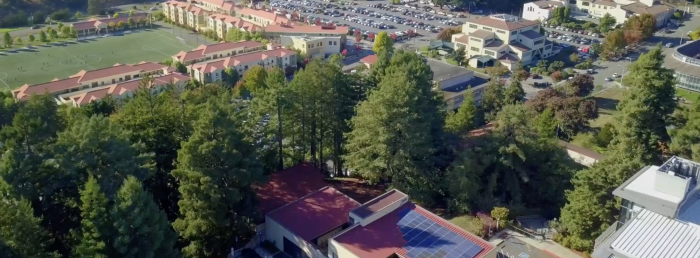How Can Government Recruit and Retain Talent?

Neil Reichenberg is the former executive director of the International Public Management Association for Human Resources (IPMA-HR). He worked for IPMA-HR, for almost four decades until his retirement in June 2020. He is an adjunct instructor at George Mason University teaching a graduate public human resource management class, writes a twice monthly public policy/legal column for the Human Resource Certification Institute, and speaks on human resource issues.
Washington Post economics columnist Catherine Rampell wrote a column titled “A Slow Moving Crisis Is Paralyzing State and Local Governments”, in which she contends that the shortage of state and local government workers is impacting the ability of governments to deliver vital public services. She attributes the primary cause to the fact that pay in state and local governments is below that of the private sector. Citing data from the Bureau of Labor Statistics (BLS) she observed that private sector pay had increased this year by 5.5% while state/local government pay had only increased by 3.4%. She acknowledges that there are other contributing factors such as government workers being older on average than private sector employees resulting in larger numbers retiring as well as the nature of some government work being less desirable as compared to available private sector jobs.
In a subsequent column, Ms. Rampell noted that while the private sector has regained all the jobs lost during the pandemic, state and local governments have 3.3% fewer workers as compared to February 2020. Based on the September 2022 jobs report, issued by BLS, the situation worsened with state and local governments shedding another 27,000 positions.
Pay is certainly a major factor in the public sector worker shortage but it’s not the only factor and if the focus is only on pay, government employers may ignore other contributing factors. While recognizing the limitations of data providing averages across sectors as large as the private sector and state and local governments, BLS total compensation data for the second quarter of 2022 shows that private sector workers are paid on average $38.91 per hour while state and local government workers are paid $55.47 per hour. Both wages and benefits are greater for state and local government workers as compared to private sector workers. While average wage increases in 2022 might have been greater for private sector workers, on average, state and local government workers are paid more and receive enhanced benefits.
State and local governments should consider enhancing communications to employees on the value of the benefits that they provide. State and local governments also might want to consider reviewing the benefits being provided to ensure that they are the ones most valued by employees. For example, retirement benefits are the single largest benefit cost according to BLS. The traditional defined benefit retirement plan may not be that valued by employees in their 20’s who intend to stay a limited time and they might prefer a more portable 401(K) style plan.
During my four decade tenure with the International Public Management Association for Human Resources (IPMA-HR), HR professionals continually indicated that they were criticized within their organizations for the amount of time it took to hire employees. State and local governments should consider reviewing their hiring processes and determining where they can streamline and shorten the time it takes to hire. State and local governments are losing candidates to the private sector that can often make quicker job offers. The shortage of workers can lead to remaining employees having to do more work over longer hours resulting in burnout and resignations. According to a MissionSquare Research Institute survey, 80% of state/local government employee respondents indicated that the increase in the number of people leaving government employment voluntarily has put a strain on their workload.
In addition to the recruitment challenges, there have been an increase in the number of employees leaving their jobs across sectors. A MissionSquare Research Institute survey found that 52% of state and local employees were thinking about leaving their jobs voluntarily due to the COVID-19 pandemic either to change jobs, retire, and/or totally leave the workforce. This research found that while pay was a crucial factor for employees considering changing their jobs, the stress and burnout from working during the pandemic as well as the need for a better work-life balance and having the time to do the things they enjoy were also top factors that were cited.
MissionSquare Research Institute reported that when public employees were asked how their employers can reduce the number of employees leaving, “Showing more appreciation and recognition of employees outranked actions including improving benefits, increasing amount of leave allowed, offering more flexible scheduling, and offering more opportunities for remote work.” There are no cost and low-cost ways that employers can recognize the work being done by their employees. Making employees feel valued will contribute to enhanced employee engagement.


State and local governments should consider enhancing communications to employees on the value of the benefits that they provide.
NEIL REICHENBERG
Deloitte published an article, Winning the Talent War in Government detailing how government can win the talent race and offered the following suggestions:
- Provide flexibility in when people work, where they work, and what type of work they do. The article cited the State of Tennessee’s Alternative Work Solutions that allows state employees options to work from home, utilize flexible work schedules and use nonpermanent workstations.
- Offer improved compensation, work-life balance, and a sense of belonging. Workers don’t want to be part of a toxic work culture. The article cited a study from MIT Sloan Management Review that found a toxic culture is 10.4 times more likely than compensation to contribute to attrition.
- Give workers the opportunity to work on different projects, participate in rotation assignments and give them professional development opportunities that provide continuous learning and skill development.
- Support the well-being of workers, especially workplace mental health. If possible, give employees the ability to choose those benefits that are of greatest value to them rather than adopting a “one size fits all” when it comes to employee benefits. The article cited a study by the Kaiser Family Health Foundation that found almost 40% of employers updated their health plans during the pandemic to expand access to mental health services. Dr. Vivek Murthy, the U.S. Surgeon General just released a new framework for mental health and well-being in the workplace.
- Improve the government brand to make government an employer of choice. The mission of government should be a competitive advantage for the public sector. Governments also need to highlight the myriad number of positions that exist within every government. The article cites a branding campaign established by the City and County of Denver called “Be a part of the city you love” that used its employees as brand champions. The campaign resulted in a 19% increase in job applications. Governments should consider developing career paths for different roles that allow new hires to envision their futures with the organization. Governments need to make it easier for people to move into and out of the public sector. This can result in workers gaining valuable experience in the private and nonprofit sectors and bringing that expertise to the public sector.
Want new articles before they get published? Subscribe to our Awesome Newsletter.

CAREER ADVICE

GOV TALK




